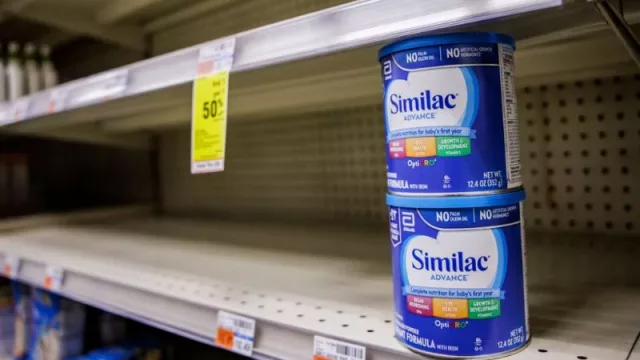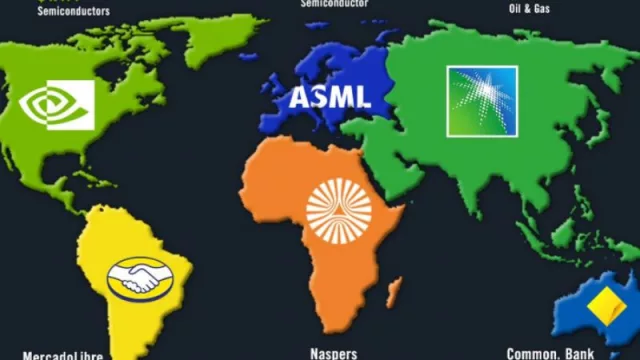It follows a crisis in which mothers, fathers and caregivers across the U.S. have had to scramble to find scarce supplies or drive long distances to buy formula.
But are the efforts enough to overcome the supply problem – and protect against it happening again in the future? The Conversation asked Dr. Steven Abrams, a leading expert on pediatric health at the University of Texas who has advised both the formula industry and government on infant nutrition, what parents should know about the imported formula.
Remind me, what caused the shortage?
First, we had a supply chain problem that affected all manner of goods since the onset of the pandemic. Then in February 2022 a major baby formula manufacturing plant in the U.S. went down.
The U.S. Food and Drug Association shut down Abbott Nutrition’s factory in Michigan after Abbott’s nationwide recall of multiple brands of formula amid concerns over bacterial infections.
The Michigan plant is the largest producer in the country, so when it went down, it put added strain on the entire U.S. formula distribution system.
Are there still shortages?
The situation is beginning to improve in some parts of the country. People are reporting fewer incidents of going to stores and finding no formula on the shelves. But it is patchy – urban areas seem to be doing better than rural places with one store serving an area.
I can see the supply issue easing further in the coming weeks. This is down to three factors: First, the domestic production of baby formula has improved. Secondly, imported formulas – part of the Biden Administration’s Operation Fly Formula mission – have helped supplement the domestic brands. Lastly, there seems to be anecdotal evidence of less hoarding by panicked parents as time goes on. This will all help alleviate the shortage.

The good news is, more relief is on the way. The factory that closed had already been allowed to release its stock of specialized formula for babies with severe allergies. And as of June 4, it also restarted production of specialty formulas after being given the green light from the FDA. However, it is expected to take 6-8 weeks for more routine formulas to be produced from this factory and make it to store shelves.
On top of that, more shipments on the way from the U.K. and Australia will add to the shipments of specialty formula from Europe we have already seen from Nestle. Additional shipments from Mexico from Nestle of routine formula are also expected within the next few weeks. We are expecting two shipments in the coming days. It will take a few days to get to stores, but parents should start seeing them on the shelves soon.
What do American parents need to know about imported formula?
Formula from Europe, Australia and Mexico are labeled differently: as “stage 1” formula for newborns and up to 12 months and “stage 2” for babies over six months.
And their mixing instructions are different. For a start, EU and Australia formula uses milliliters rather than ounces. Some, but not all, will have substantially different powder to water ratios. Parents will need to pay attention to this. Anyone preparing imported formula will need to take careful note of the mixing instructions – too much powder and you will over-concentrate the formula, risking too much salt. Over-diluting will mean too little salt and nutrients.
In addition, two of the brands being imported will include formula made from goats milk protein – the Australian firm Bubs and the U.K. company Kendamil. This isn’t uncommon in the rest of the world, but in the U.S., all animal-based infant formula is based on cow’s milk.
This isn’t a bad thing. Some scientific evidence suggests goat’s milk is more digestible for babies than cow’s milk.
The other thing to note is that we are still waiting on the FDA to find out which of the imported formulas will get approved for distribution through the federal food program called WIC. WIC provides formula for a majority of babies in low-income families.
How has the shortage affected low-income families?
A majority of all parents will feed babies with formula at some point to meet their nutritional needs, especially older infants. At birth and in days immediately after, around 80% of babies receive all their nutrition through breast milk. But by the age of six months, the majority of babies get at least some formula. The proportion of 1-year-old babies receiving formula is even higher. This is largely the result of social dynamics and pressures – mothers going back to work after giving birth, but not receiving sufficient support to produce and store sufficient amounts of breast milk.
But the shortage has affected some parents more than others. And not surprisingly, the most affected parents are those on the lowest income.
During the shortage, some families drove long distances to find stores selling formula. Obviously that is harder to do for poorer families, as there are costs involved. Likewise, more affluent parents have been able to buy more expensive, so-called elite brand formulas.
The other thing to note is that the shortage affected both regular infant formula and specialized versions. Regular or standard formula is the type most families are familiar with, and around 95% of formula-fed babies get the standard type.
Specialized formula is for babies with unusual requirements, due to allergies, damaged intestines or special nutritional needs.
Why is getting sufficient supplies of formula so important?
In the first six months, babies should only have breast milk or formula – anything else fed to them will be nutritionally incomplete. So there is a risk that a shortage will mean that babies will not be getting the nutrition they need to develop. That could lead to a range of health problems affecting their physical growth and brain development.
Then there are concerns that parents may be using unsafe alternatives, like watering down their baby’s formula. People have been known to try and make their own by mixing powdered milk or vegan milk with vitamins. Not only are these alternatives nutritionally incomplete, they may not be entirely sterile. Indeed, we have seen reports of babies being hospitalized as a result of being fed homemade formula.
After the age of six months, things get a little better once the infant is able to start eating solid food. But even then, formula or breast milk remains the primary source of nutrition. So there may still be a risk of nutritional deficiencies, such as iron deficiencies.
Are there any viable alternatives?
Over the age of six months of age, for only reasonably short periods of time, parents can feed infants whole cow’s milk and look into iron supplements.
It isn’t ideal, and only applies for older babies. For those under six months old, cow’s milk is a real problem. It doesn’t have the right protein blend for babies and has next to no iron – risking anemia in very young babies. Cow’s milk also has a misbalance of minerals, especially for younger babies.
What can be done to prevent this situation from happening again in the U.S.?
First we need to help families regain confidence in the formula production and supply system. This will prevent problems such as hoarding or making home brew formulas – the worst thing would be that those who have moved to homemade formulas continue to do so after stocks are supplied.
Then we need to look at how to make sure one plant going down doesn’t affect the whole system. The federal government can’t stockpile formula in the same way it might stockpile oil, as formula has a shelf life. But diversifying infant formula production is a possibility. This would involve making sure multiple factories and companies are making the formulas that this country needs. Competition could potentially drive down prices. One positive to come from the shortage is that it is introducing new entrants into the U.S. market. Meanwhile, there is now a recognition that the U.S. needs to diversify its production of formula.
I believe America also needs to look at the country’s breastfeeding support system. Don’t get me wrong: Some parents will always need formula. But those who want to breastfeed need everything possible done to support them. That includes better family leave policies, and help for low-income mothers who want to pump and store milk while they work.
Editor’s note: This is an updated version of an article originally published on May 12, 2022.
Steven A. Abrams, Professorof Pediatrics, University of Texas at Austin
This article is republished from The Conversation under a Creative Commons license. Read the original article.













Tu opinión enriquece este artículo: